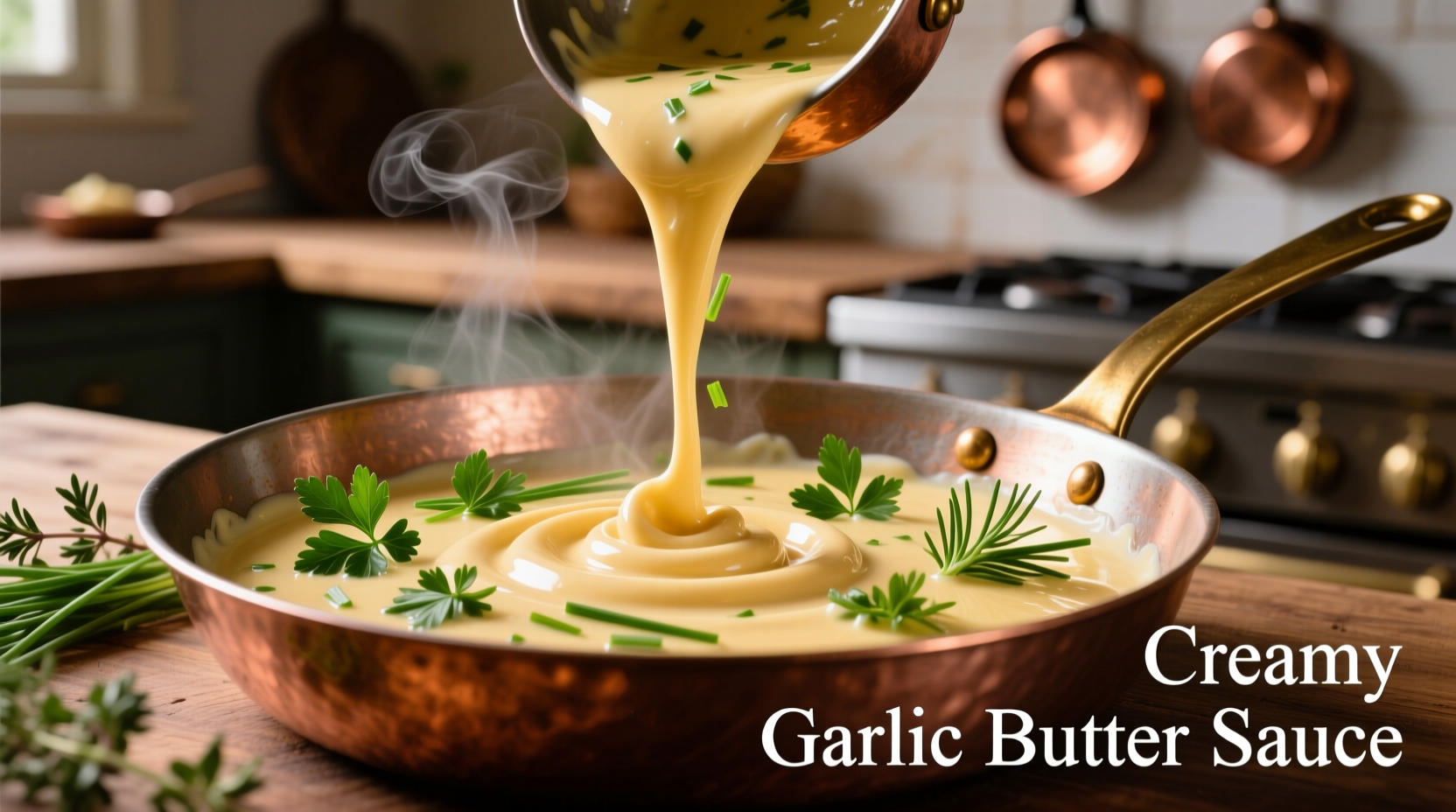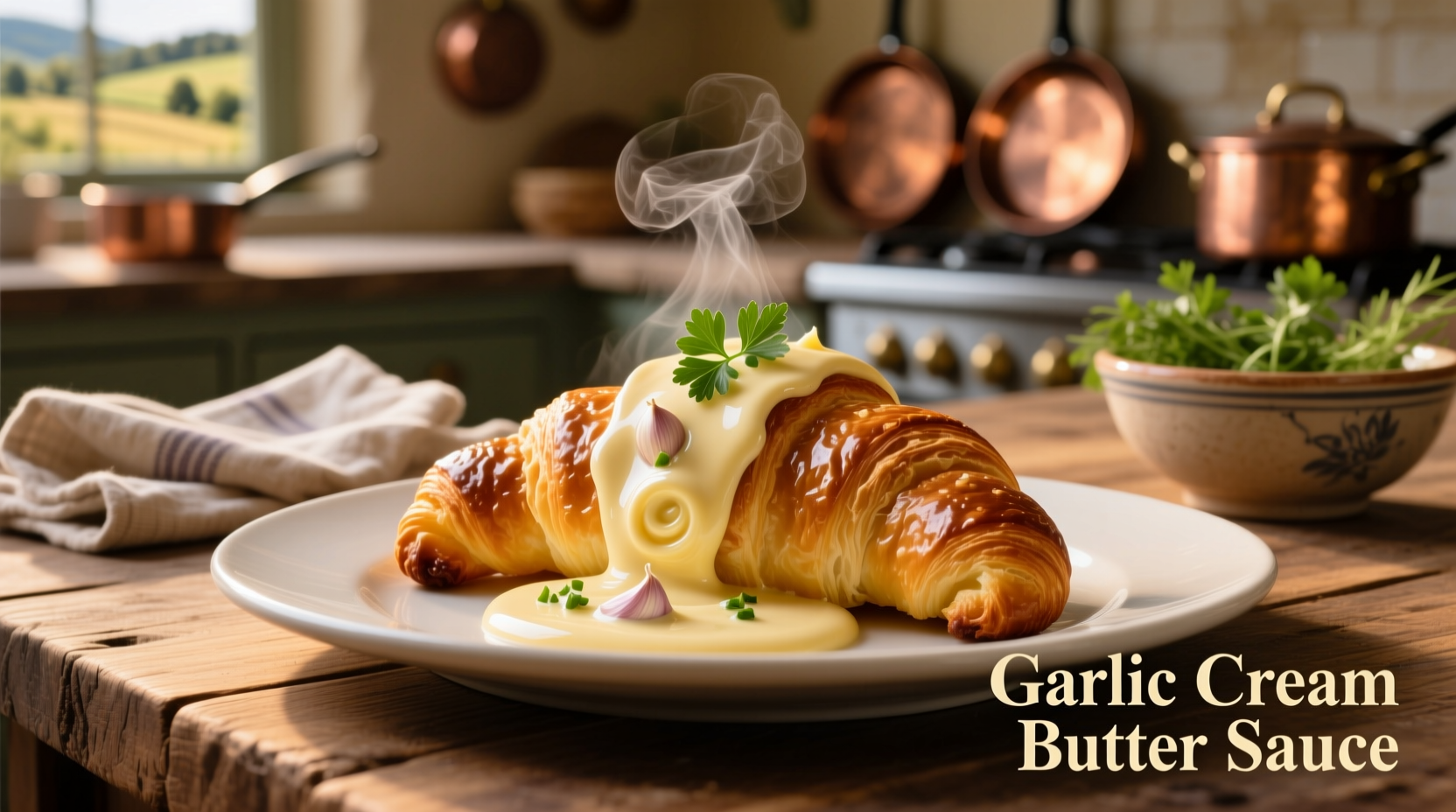Garlic cream butter sauce combines softened butter, fresh garlic, heavy cream, and herbs to create a rich, velvety sauce perfect for pasta, seafood, and vegetables. This versatile sauce emulsifies when ingredients are added at proper temperatures, creating a smooth texture that clings to food without separating. The ideal ratio is 1 stick butter to 3-4 garlic cloves and 1/4 cup cream for a balanced flavor that enhances rather than overwhelms.
Mastering garlic cream butter sauce transforms ordinary meals into restaurant-quality dishes with minimal effort. This foundational sauce works in under 10 minutes using pantry staples, yet delivers complex flavor through proper technique. Whether you're finishing seared scallops, coating fettuccine, or basting roasted vegetables, understanding the science behind emulsion and temperature control ensures perfect results every time.
The Science Behind Perfect Emulsion
Successful garlic cream butter sauce depends on controlled emulsion—the process where fat (butter) and liquid (cream) combine into a stable mixture. When butter melts below 140°F (60°C), its milk solids remain suspended rather than separating. Adding cream gradually while whisking incorporates air molecules that stabilize the mixture. Fresh garlic's natural pectin acts as an emulsifier, helping maintain the sauce's silky texture.
| Traditional Method | Modern Technique | Result Difference |
|---|---|---|
| Raw garlic added to hot butter | Gentle garlic infusion in warm (not hot) butter | Prevents bitter, burnt garlic flavor |
| Cream added all at once | Gradual cream incorporation while whisking | Creates stable emulsion without breaking |
| High-heat reduction | Simmer below 160°F (71°C) | Maintains smooth texture without curdling |
Classic Recipe: Step-by-Step Execution
Follow this professional chef technique for foolproof results:
- Prepare ingredients: Soften 8 oz unsalted butter to 65°F (18°C), mince 3-4 garlic cloves finely, measure 1/4 cup heavy cream
- Infuse garlic: Melt 2 tbsp butter in saucepan over low heat, add garlic, cook 2 minutes until fragrant but not browned
- Create base: Remove from heat, whisk in remaining butter one tablespoon at a time until fully incorporated
- Emulsify: Gradually whisk in cream while returning to low heat, maintaining temperature below 160°F
- Finish: Remove from heat, stir in 1 tbsp lemon juice and 2 tbsp chopped parsley

Avoiding Common Pitfalls
Even experienced cooks encounter these issues:
- Sauce breaks: Caused by excessive heat or rapid ingredient addition. Fix by whisking in 1-2 tsp cold water while cooling slightly
- Bitter garlic: Results from browning. Start with cooler butter and cook garlic just until aromatic (about 90 seconds)
- Thin consistency: Overheating causes separation. Simmer gently and reduce cream first if needed
Variations for Dietary Needs & Occasions
Adapt this base recipe for different requirements:
- Dairy-free version: Substitute butter with vegan butter sticks and coconut cream (USDA Food Safety and Inspection Service confirms proper handling temperatures for plant-based alternatives)
- Lighter option: Replace half the butter with chicken or vegetable stock, thickened with a cornstarch slurry
- Restaurant-style enhancement: Add 1/4 cup dry white wine after garlic infusion, reducing by half before adding cream
Strategic Pairing Guide
Maximize flavor impact with these pairings:
- Pasta perfection: Toss with fettuccine, adding pasta water to help sauce adhere (the starch creates ideal viscosity)
- Seafood companion: Spoon over seared scallops during final cooking minute for subtle infusion
- Veggie enhancer: Drizzle over roasted asparagus or Brussels sprouts just before serving
Understanding context boundaries prevents culinary missteps. Avoid using garlic cream butter sauce with delicate fish like sole where its richness would overwhelm, or in dishes already containing competing creamy elements like alfredo. The Culinary Institute of America's flavor balancing principles confirm that sauces should complement rather than dominate main ingredients.
Storage & Reheating Protocol
Proper handling maintains quality:
- Refrigeration: Store in airtight container for up to 3 days (FDA recommends 40°F or below for dairy products)
- Freezing: Portion in ice cube trays, transfer to freezer bags for up to 2 months
- Reheating: Warm gently over low heat while whisking, adding splashes of cream or stock if separation occurs
Historical Evolution of Butter Sauces
Butter-based sauces have evolved significantly since their French culinary origins:
- 1651: François Pierre de La Varenne's Le Cuisinier François documented early beurre blanc techniques
- 1800s: Auguste Escoffier standardized mother sauces including béchamel and hollandaise
- 1970s: California cuisine movement popularized lighter, herb-infused butter sauces
- Present: Modern chefs focus on emulsion science for stable, consistent results
This historical progression shows how garlic cream butter sauce represents contemporary adaptation of classic French techniques. The American Culinary Federation notes that modern interpretations prioritize accessibility while maintaining technical precision.











 浙公网安备
33010002000092号
浙公网安备
33010002000092号 浙B2-20120091-4
浙B2-20120091-4